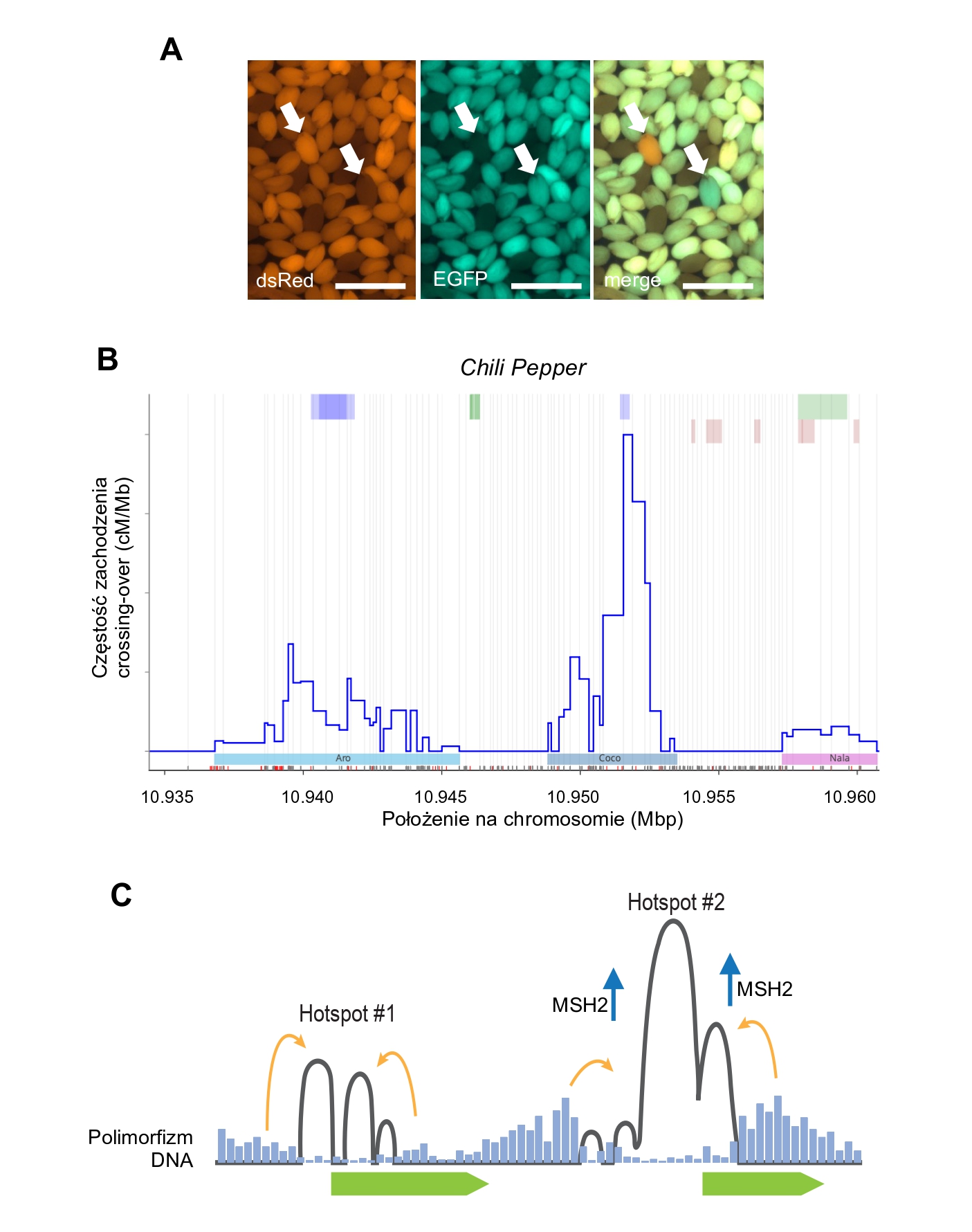Crossover recombination is the mutual exchange of DNA fragments between parental chromosomes during meiosis, i.e. cell division, resulting in the formation of reproductive cells. Crossover is necessary for the proper segregation of chromosomes during meiosis, but also for the formation of new combinations of gene alleles, i.e. shuffling of genetic information from both parents. Thanks to this, the offspring of sexually reproducing individuals differ from their parents by presenting a specific mixture of their characteristics. For these reasons, crossover is a basic tool for breeders to obtain new improved animal breeds and crop varieties.
Crossover events do not occur evenly along the chromosomes, but in specific regions known as recombination hotspots. One of the basic limitations in research on the factors influencing the crossover formation is the lack of methods ensuring precise identification of the crossover site. Therefore, to be able to map crossover events at the level of recombination hotspots, we developed a new technique called seed-typing. It is based on the segregation of genes encoding fluorescent proteins in seeds (Figure A). Using the technique we developed, we identified one of the most active recombination hotspots in the model plant Arabidopsis thaliana, which we named Chili Pepper (Figure B). In addition, we have shown that differences in DNA between parents, so-called DNA polymorphisms are detected by special MSH2 protein complexes that stimulate crossover events within recombination hotspots.
Based on the conducted research, we proposed a model in which recombination hotspots located in regions with a higher density of DNA polymorphisms (Hotspot #2 in Figure C) are more active than neighboring ones located in less polymorphic regions (Hotspot #1). Stimulation of hotspot activity is dependent on MSH2 polymorphism detection proteins.
Our results provide a detailed analysis of crossover recombination at recombination hotspots, which in the future may enable precise crossover targeting to selected chromosomal regions. Thanks to this, it will be possible to transfer beneficial versions of genes between varieties of crop plants, e.g. those responsible for resistance to diseases.
Szymanska-Lejman M, Dziegielewski W, Dluzewska J, Kbiri N, Bieluszewska A, Poethig RS, Ziolkowski PA. The effect of DNA polymorphisms and natural variation on crossover hotspot activity in Arabidopsis hybrids. Nat Commun. 2023 Jan 3;14(1):33. https://www.nature.com/articles/s41467-022-35722-3.

